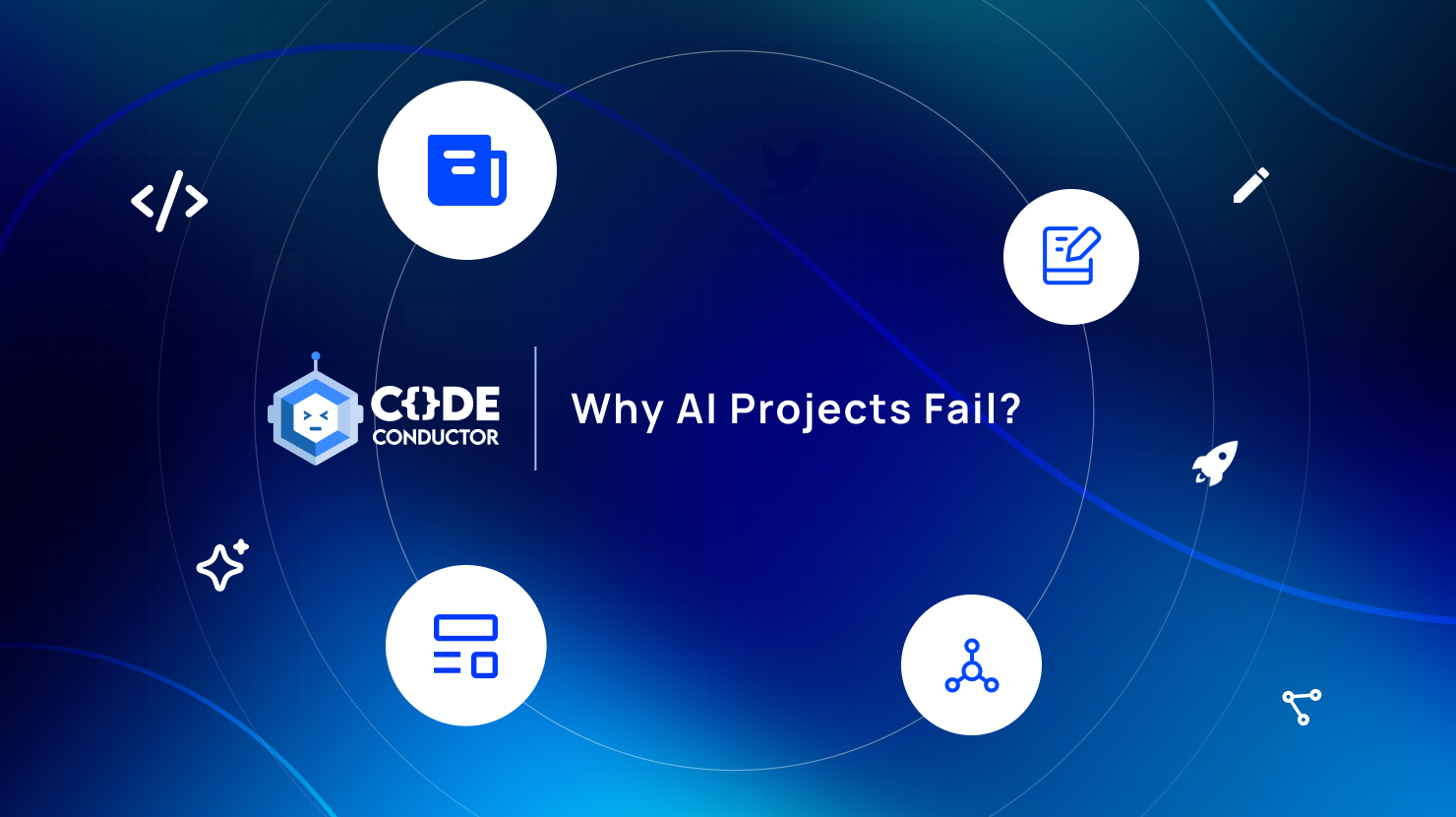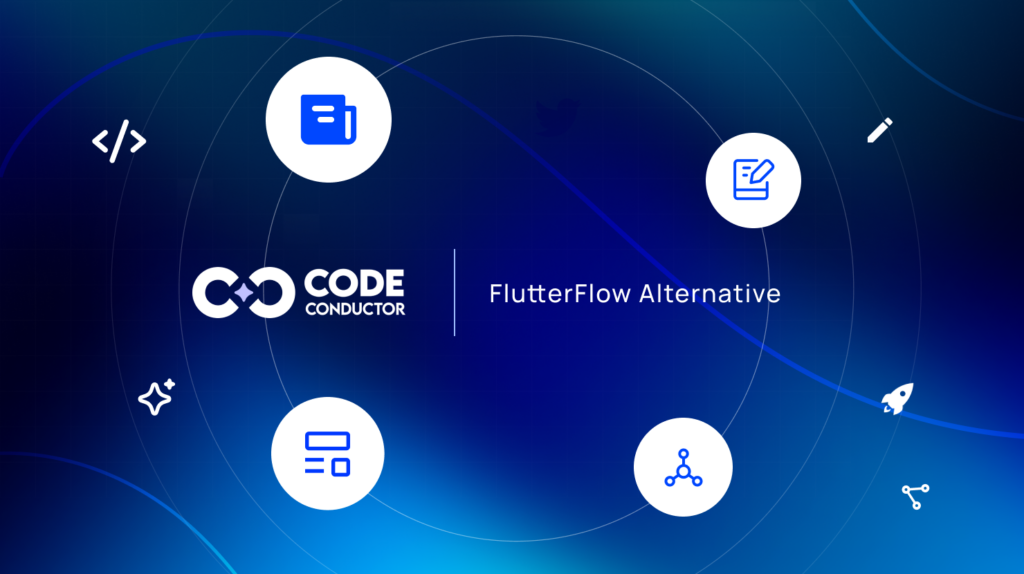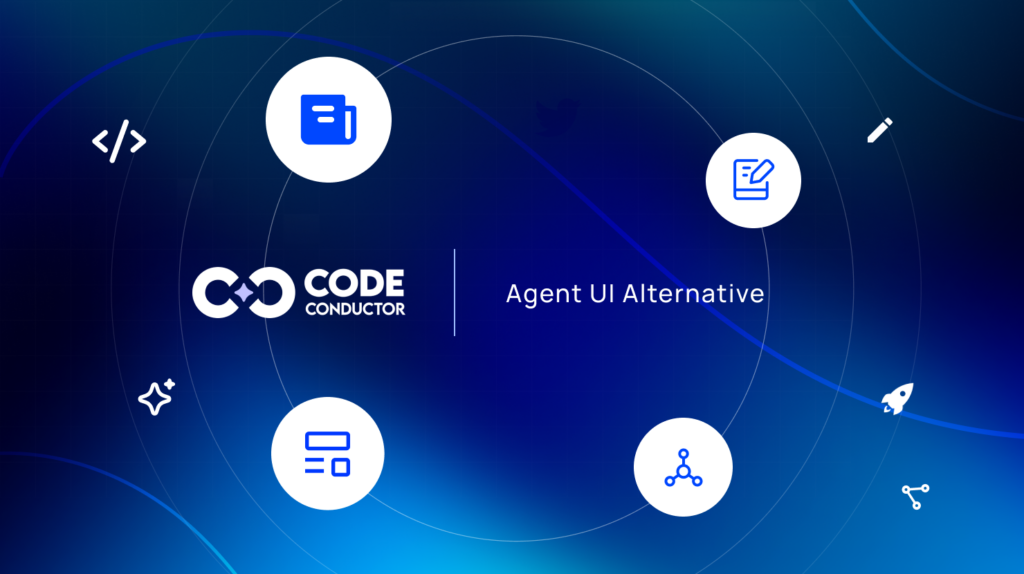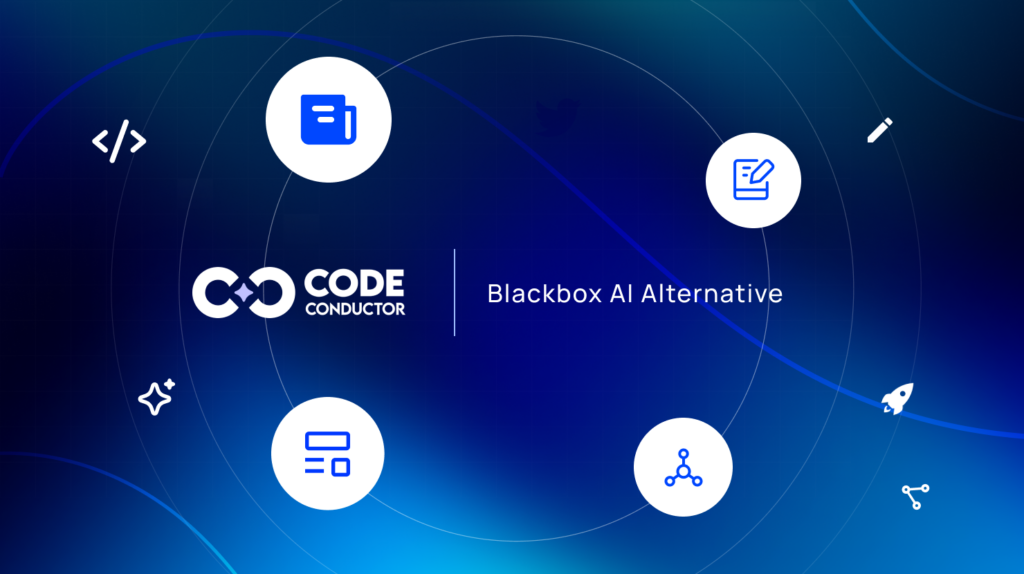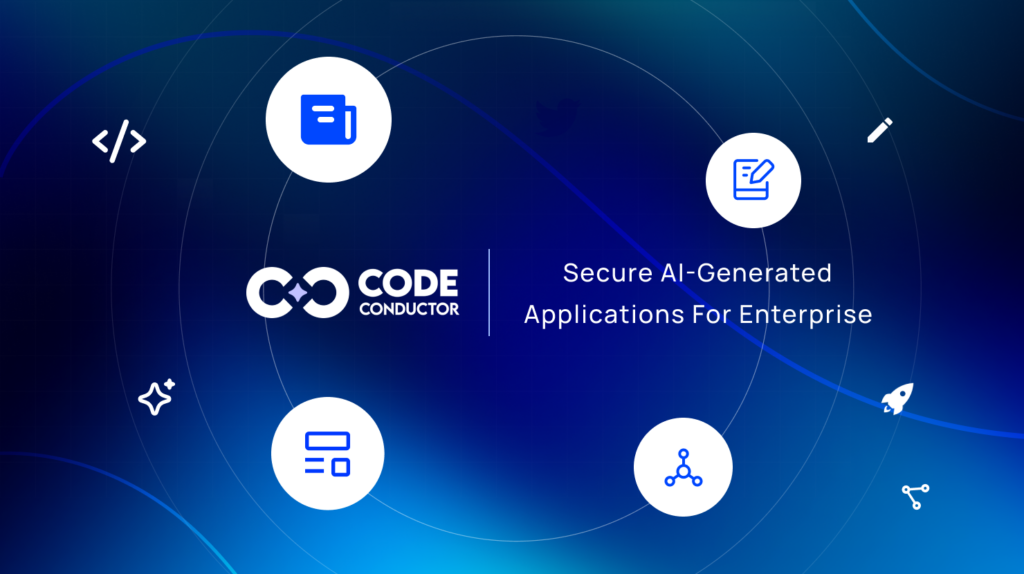It starts with big goals: build a smart app, automate decisions, wow users. But most AI ideas stall out somewhere between the model and the market.
According to IRS reports, only 30 out of 68 AI initiatives have moved into implementation or active use; the rest remain stuck in development or planning stages. That’s less than half achieving operational status.
Why? Because turning AI into a usable product isn’t just about the algorithm. It requires frontends, backends, APIs, authentication, deployment, and monitoring, the full stack. That’s where most teams get stuck.
Similarly, an investigative report by the UK Public Accounts Committee reveals that nearly a third of government IT systems are outdated, undermining the rollout of AI across public services
Most AI project failures don’t come from technology, but from weak infrastructure, fragmented data, and poor execution support.
That’s exactly why CodeConductor.ai exists: to help teams avoid AI project failure by fast-tracking ideas into live, working apps. From generating UI and backend to deployment, it covers everything. Whether you’re reviving a struggling build or starting from scratch, CodeConductor ensures your AI project doesn’t fail, it goes live.
In This Post
- What’s Really Slowing Down Your AI Projects?
- Why Do AI Projects Fail Despite High Investment?
- What to Do When Your AI Project Starts Failing?
- What Makes an AI Project Successful (and How to Prove It)
- Best Practices to Ensure Your AI Project Doesn’t Fail Again
- Ready to Turn Your AI Roadmap Into Real Outcomes?
What’s Really Slowing Down Your AI Projects?
An AI project failure rarely means the model is broken. More often, it’s about missing infrastructure, fragmented data, or lack of execution support. Building a successful AI application requires much more than algorithms alone.

Here’s where most teams hit a wall:
1. There’s No Interface for Users to Interact With
Even if your AI does something amazing behind the scenes, it needs a usable interface to create business value. But designing and connecting a frontend, forms, inputs, dashboards, takes time, tools, and skilled developers.
With CodeConductor.ai, you simply describe your desired interface using natural language. The system generates full-stack code for your UI, ready to deploy, test, or customize.
2. Backends Are Still a Bottleneck
For every AI feature, there’s backend logic, data flow, and authentication that needs to be built. This is where many AI projects slow to a crawl, especially if you lack dedicated engineers.
CodeConductor’s prompt-based editor lets you generate backend logic, connect to databases, and create secure API endpoints, all from a simple text prompt.
3. Deployment is a Whole New Problem
Even with a working prototype, deploying to production means configuring servers, setting up CI/CD, and managing environments, often with little room for error.
CodeConductor auto-generates deploy-ready code and supports output to your preferred infrastructure.
4. Requirements Change Faster than Teams Can Code
AI projects evolve quickly. But every change in business logic or UI structure usually means manual rework across multiple layers.
CodeConductor’s dynamic schema generation and modular architecture allow for rapid iteration. Describe the change, and regenerate clean code, no refactoring headaches.
Understanding the friction points that slow down AI delivery is only half the battle. The real concern is what happens when those roadblocks aren’t addressed.
Projects stall, momentum fades, and in many cases, promising AI initiatives are quietly shelved.
But these unfinished builds come at a price and not just in lost productivity.
Before letting another AI effort go cold, it’s important to unpack the true cost of abandonment.
Why Do AI Projects Fail Despite High Investment?
When an AI project fails to launch, it doesn’t just stop progress, it creates hidden costs that drag down your entire innovation strategy. These costs may not appear on a balance sheet, but their impact ripples across time, teams, and trust.
1. Wasted Spend on Talent and Infrastructure
AI initiatives demand highly skilled teams and powerful infrastructure. Abandoning a project midstream means writing off cloud costs, compute cycles, engineering hours, and vendor contracts, often without gaining any usable IP or insight in return.
2. Eroded Team Morale and Confidence
Repeated failures create internal skepticism. Engineers burn out, stakeholders lose faith, and future AI proposals get more scrutiny, even when they’re solid. Innovation fatigue sets in, slowing digital transformation across the board.
3. Opportunity Cost of Inaction
Every AI project that fails to ship is a missed opportunity for better decisions, automation, and insights. Meanwhile, competitors with successful AI rollouts start pulling ahead in efficiency, personalization, and market responsiveness.
4. Accumulated Technical Debt
Prototypes often leave behind partial infrastructure, fragmented data flows, or unmaintained codebases. If not resolved, these artifacts create confusion and blockers for future initiatives, raising the cost of starting fresh later.
Well, the good news is that abandonment isn’t the only option. Even if your AI initiative has stalled, it doesn’t mean it’s beyond repair. With the right strategy, tools, and mindset, it’s entirely possible to recover lost momentum, and turn a stuck project into a success story.
Let’s look at what to do when your AI project starts failing.
What to Do When Your AI Project Starts Failing?
If your AI project has stalled, whether
- It’s stuck in prototyping,
- Plagued by infrastructure issues, or
- Just not delivering, you’re not alone.
Many businesses reach this point and assume the project has failed. But with the right tools and structure, it’s often possible to rescue a failing AI project and still extract business value.

Here’s what the recovery process should focus on:
1. Reframe the Business Problem
Many AI failures stem from misaligned goals. Was the project solving a vague or moving target? Was the business problem ever clearly defined? Resetting starts with refining the “why” behind the app, aligning it with a clear, testable objective.
2. Perform a Component-Level Audit
Not every part of a failed AI build is broken. The model might be solid, but the infrastructure is fragile. A successful rescue effort requires assessing what’s salvageable: data structures, API logic, even user flows.
3. Harden the Weak Links
Projects often stall due to invisible fragilities like hard-coded assumptions, missing fallback states, or a lack of modularity. These issues can turn minor bugs into major blockers. A recovery plan should focus on reinforcing code quality and structure, not just fixing errors.
4. Plan for Future Change
One of the best things about a rescue effort? It’s a chance to build smarter this time. If the system is redesigned with flexible modular logic, reusable schemas, and loosely coupled components, future updates become easier, not harder.
Rescuing an AI project isn’t just about fixing what went wrong, it’s about unlocking the value that was always intended.
Once your system is back on track, the next question becomes: What kind of return can we expect now that it’s working?
Let’s explore what successful AI recovery looks like in real business terms, and how much impact it can truly deliver when done right.
What Makes an AI Project Successful (and How to Prove It)
Most AI success stories go beyond model accuracy or a good demo. They’re built on measurable business impact, sustainable performance, and consistent end-user value.
1. Business-Level Outcomes
- Increased revenue from smarter decisions
- Reduced costs via automation and optimization
- Faster turnaround time across workflows
2. Operational Excellence Indicators
- Reduction in manual tasks and error rates
- Improved decision-making speed
- Scalable deployment across departments
3. Technical Reliability Over Time
- Stable model behavior across varying data conditions
- Low latency and high model availability
- Frequent retraining with version control
Many teams fail not because their models were inaccurate, but because they couldn’t connect AI performance to business value. Success comes when technical teams and business units work from the same scorecard.
Well, knowing how to measure AI success is critical, but sustaining that success is an entirely different challenge. That’s where best practices come into play, not just to avoid past mistakes, but to build a repeatable framework for future AI wins.
Best Practices to Ensure Your AI Project Doesn’t Fail Again
Rescuing a failing AI initiative is just the first step. To ensure your next rollout doesn’t fall into the same traps, successful organizations follow a consistent set of principles that bridge strategy and execution.
1. Start With a Business Problem, Not a Model
AI success starts with clarity. Define the business decision or outcome you want to improve, before choosing tools, models, or datasets. This grounds your solution in real-world relevance and measurable value.
2. Design for the Full Lifecycle
AI isn’t a one-time deployment. Think about deployment, monitoring, retraining, and user integration from day one. Building for the full lifecycle increases adoption and reduces rework.
3. Enable Cross-Functional Collaboration
The best AI projects are co-owned by data scientists, engineers, product managers, and business leaders. Break silos early with shared workflows, transparent metrics, and regular checkpoints.
4. Automate What You Can, Monitor What You Must
Automation saves time, but observability saves your project. Invest in tooling that tracks both model behavior and business KPIs, so your system improves continuously, not just during sprints.
5. Educate Stakeholders on AI’s Real Capabilities
Unrealistic expectations are a silent killer of AI momentum. Align teams with training and internal communications that explain what AI can do, and just as importantly, what it can’t.
6. Integrate MLOps From the Start
From CI/CD pipelines to versioning, MLOps ensures your AI systems are repeatable, testable, and scalable. The earlier you implement these practices, the easier it becomes to deploy and maintain AI at scale.
Ready to Turn Your AI Roadmap Into Real Outcomes?
Starting an AI project is easy. Finishing one and turning it into something useful is the real challenge. Too often, promising initiatives fall apart not because of weak ideas, but because teams lack the infrastructure, coordination, or clarity to push them across the finish line.
If your AI build is stuck, delayed, or simply not delivering, it’s not too late. You don’t have to start from scratch, you just need a smarter way to rebuild and relaunch.
How CodeConductor Helps AI Projects Succeed
For teams that are serious about scaling AI, CodeConductor is more than a tool, it’s the infrastructure backbone that turns good intentions into real business outcomes.

- Aligns Teams Around Business Impact: CodeConductor gives product owners, data scientists, and engineers shared visibility into project goals, timelines, and performance checkpoints. This ensures alignment from day one.
- Simplifies the Technical Stack: With built-in tools for data ingestion, labeling, model training, and deployment, CodeConductor replaces fragmented workflows with a streamlined pipeline that is production-ready by design. Meanwhile, check out the Enterprise Language Stack.
- Enables Continuous Monitoring and Iteration: Performance doesn’t stop at deployment. CodeConductor offers built-in observability, versioning, and rollback so models can evolve as the data changes and business needs shift.
- Reduces Time to Value: By automating routine steps and integrating best practices into the platform, CodeConductor accelerates the transition from concept to production without compromising quality or governance.
Whether you’re rescuing a broken model or launching your first real AI product, CodeConductor helps you turn strategy into shippable software, faster.
Start Building with CodeConductor – Try it Free

Founder CodeConductor

